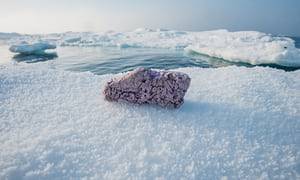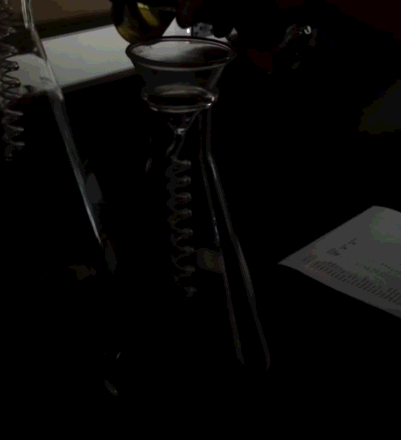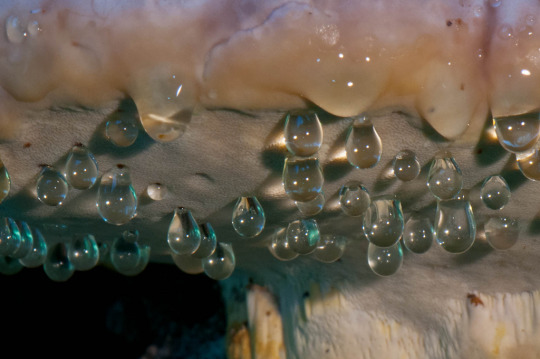Don't wanna be here? Send us removal request.
Video
tumblr
Every once in a while, sanctuary researchers get a treat – like getting to see this tiny baby octopus! 🐙 .
Each summer, researchers conduct expeditions in our West Coast sanctuaries as part of the ACCESS conservation partnership. Researchers get to see creatures big and small when conducting surveys in places like Greater Farallones National Marine Sanctuary!
2K notes
·
View notes
Photo

Your eyes make waste. Without it, you could go blind
One man’s trash is another man’s treasure, even at the level of the cell. That’s where—according to new research—a waste product of the retina fuels part of the eye that powers the rods and cones that help us sense light. Without this waste, that part of the eye “steals” glucose from the retina, leading to the death of retinal cells and likely vision loss. The finding could help explain why eyesight degenerates with age—and in diseases such as macular degeneration and diabetes.
“It’s almost a revolutionary concept” that there is such a tight coupling between the two parts of the eye, says Stephen Tsang, a retina specialist at Columbia University who was not involved in the work.
Rods and cones are very active, and they need a lot of energy to do their jobs. Exactly how they get this energy has long been a mystery. In previous studies, researchers showed that a layer of cells beneath the retina, the retinal pigment epithelium (RPE), ferries glucose from the blood to the retina. But it was unclear why the RPE didn’t keep the glucose for itself.
After a decade of study, biochemist James Hurley at the University of Washington in Seattle and his colleagues have now shown that the retina’s rods and cones burn the glucose, convert leftovers into a fuel called lactate, and then feed that back to the RPE. “There is a growing consensus that no cell exists on its own in complex tissues like the retina,” says Martin Friedlander, an ophthalmologist at The Scripps Research Institute in San Diego, California, who was not involved with the new work.
442 notes
·
View notes
Photo

Scientists hope damage to Larsen C ice shelf will reveal ecosystems
A team of scientists is planning an expedition to examine the marine ecosystem revealed when an enormous iceberg broke off the Larsen C ice shelf earlier this year.
In July, the iceberg known as A68 broke off the shelf, leaving the area at its lowest recorded extent. Researchers are now hoping the event may lead to novel revelations from their investigations of the area opened up, which had been hidden under ice for up to 120,000 years.
Scientists from the British Antarctic Survey (BAS) will embark on the research ship RRS James Clark Ross in February 2018 to take the first look at the newly exposed ecosystems under the ice – if the conditions work in their favour.
“You can never predict the ice,” said mission leader Dr Katrin Linse. “There are still several hundred kilometres covered in sea ice which has to move and melt. Fortunately this often happens now during the Antarctic summer, so that is why we are hopeful for February.”
If everything works out, the scientists will have the chance to look at 5,800 sq km of sea floor that had been shielded for tens of thousands of years. Planning for such expeditions normally takes several years, but urgent funding schemes are available during such unpredictable natural events, like the volcanic activity over Iceland in 2010.
The crack in the Larsen C ice shelf. Researchers will look at the newly exposed ecosystems under the ice next year, if conditions allow Photograph: IceBridge/NASA
136 notes
·
View notes
Photo



Have you ever wondered just how detergents are able to get grease and oil off a surface? This simple example demonstrates one method. In the top image, a drop of oil sits attached to a solid surface; both are immersed in water. An eyedropper injects a surfactant chemical near the oil drop. This lowers the surface tension of the surrounding water and allows the mixture to better wet the solid. That eats away at the oil drop’s contact with the surface. It takes awhile – the middle animation is drastically sped up – but the oil droplet maintains less and less contact with the surface as the surfactant works. Eventually, in the bottom image, most of the oil drop detaches from the surface and floats away. (Image credits: C. Kalelkar and A. Sahni, source)
607 notes
·
View notes
Photo

The Big Crunch Theory.
The Big Crunch is one possible scenario for the ultimate fate of the Universe. Just like many others, it is based on Einstein’s Theory of General Relativity. That is, if the Big Bang describes how the Universe most possibly began, the Big Crunch describes how it will end as a consequence of that beginning. In this theory, the metric expansion of space eventually reverses and the Universe recollapses, ultimately causing the cosmic scale factor to reach zero or causing a reformation of the Universe starting with another Big Bang.
593 notes
·
View notes
Photo

If you care about the the oceans and all the life therein or if you are more self-centered, maybe just like seafood, pay attention!
How did that get there? Plastic chunks on Arctic ice show how far pollution has spread
A British-led expedition has discovered sizeable chunks of polystyrene lying on remote frozen ice floes in the middle of the Arctic Ocean.
The depressing find, only 1,000 miles from the north pole, is the first made in an area that was previously inaccessible to scientists because of sea ice. It is one of the most northerly sightings of such detritus in the world’s oceans, which are increasingly polluted by plastics.
Estimates suggest that there are more than 5 trillion pieces of plastic floating on the surface of the world’s oceans. It has been claimed that there is now enough plastic to form a permanent layer in the fossil record. Dr Ceri Lewis, scientific adviser to the expedition based at the University of Exeter, has previously warned that people produce around 300 million tons of plastic a year, roughly the same weight as all the humans on the planet. Around half of all plastic produced is used once and then thrown away.
A significant concern is that large plastic pieces can break down into “microplastics” – tiny particles that are accidentally consumed by filter-feeding animals. The particles remain in animals’ bodies and are passed up the food chain, threatening wildlife at all levels from zooplankton to apex predators such as polar bears. In an attempt to gauge the presence of microplastics in Arctic waters, the scientists intend to test samples of seawater they collected in nets with holes smaller than a millimetre across.
Plastic pollution on an ice floe in the middle of the Arctic Ocean. Photograph: Conor McDonnell
756 notes
·
View notes
Photo

Chemiluminescence of “Luminol”
To exhibit its luminescence, the luminol must be activated with an oxidant. Usually, a solution containing hydrogen peroxide (H2O2) and hydroxide ions in water is used as the activator. In the presence of a catalyst such as an iron or periodate compound, the hydrogen peroxide is decomposed to form oxygen and water:
2H2O2 → O2 + 2 H2O
H2O2 + KIO4 → KIO3 + O2 + H2O
In a laboratory setting, the catalyst used is often potassium ferricyanide or potassium periodate. In the forensic detection of blood, the catalyst is the iron present in hemoglobin. Enzymes in a variety of biological systems may also catalyze the decomposition of hydrogen peroxide.

When luminol reacts with the hydroxide ion, a dianion is formed. The oxygen produced from the hydrogen peroxide then reacts with the luminol dianion. The product of this reaction, an organic peroxide, is very unstable and is made by the loss of a nitrogen, the change of electrons from excited state to ground state, and the emission of energy as a photon. This emission produces the blue glow. - Wiki
Giffed by: rudescience From: This video
4K notes
·
View notes
Photo

Researchers find ‘internal clock’ within live human cells
A team of scientists has revealed an internal clock within live human cells, a finding that creates new opportunities for understanding the building blocks of life and the onset of disease.
“Previously, a precise point of a cell in its life cycle could only be determined by studying dead cells,” explains Alexandra Zidovska, an assistant professor of physics at New York University and the senior author of research, which appears in the latest issue of the journal Proceedings of the National Academy of Sciences (PNAS). “However, with this discovery, which shows that the nucleus exhibits rapid fluctuations that decrease during the life cycle of the cell, we can enhance our knowledge of both healthy and diseased human cells.”
The study, which also included Fang-Yi Chu, an NYU doctoral candidate, and Shannon Haley, an NYU undergraduate, sought to expand our understanding of the cell nucleus during the cell cycle.
It’s long been established that the shape and size of the cell nucleus change dramatically during a cell’s life. Unknown, however, was whether or not the nucleus changes its shape over short periods of time. This was largely due to technical limitations of carrying out such measurements in living cells.
To capture this dynamic, the scientists used a state-of-the-art fluorescent microscope that enables them to see extremely small and very fast shape changes of the cell nucleus in living cells.
The researchers discovered that the human cell nucleus has a previously undetected type of motion: its nuclear envelope flickers, or fluctuates, over a period of a few seconds. Notably, the amplitude of these changes in shape decreases over time during the cell cycle. Moreover, this motion marks the first physical feature that systematically changes with the cell cycle.
“Therefore, this process can serve as an internal clock of the cell, telling you at what stage in the cell cycle the cell is,” explains Zidovska. “We know that structural and functional errors of the nuclear envelope lead to a large number of developmental and inherited disorders, such as cardiomyopathy, muscular dystrophy, and cancer. Illuminating the mechanics of nuclear shape fluctuations might contribute to efforts to understand the nuclear envelope in health and disease.”
Fang-Yi Chu el al., “On the origin of shape fluctuations of the cell nucleus,” PNAS (2017). www.pnas.org/cgi/doi/10.1073/pnas.1702226114
Human cell nuclei with fluorescently labeled chromatin (purple) and nuclear envelope (green). Credit: Fang-Yi Chu and Alexandra Zidovska, Department of Physics, New York University.
434 notes
·
View notes
Photo


“Pale Blue Dot 2.0” came in the form of this humbling image captured by Cassini as it orbited Saturn in 2013. Tomorrow, after 13 years of orbiting Saturn and making groundbreaking discoveries, Cassini will take a plunge into the planet’s atmosphere, where incredibly high temperatures will melt and break apart the probe. Cassini took seven years to travel nearly 2.2 billion miles to reach Saturn. But once it arrived, it started taking some breathtaking pictures of the planet, its rings, and many moons.
5K notes
·
View notes
Photo

Today the Cassini mission has reached its end…
11K notes
·
View notes
Video
tumblr
After 20 years in space, the Cassini spacecraft is running out of fuel. In 2010, Cassini began a seven-year mission extension in which the plan was to expend all of the spacecraft’s propellant exploring Saturn and its moons. This led to the Grand Finale and ends with a plunge into the planet’s atmosphere at 6:32 a.m. EDT on Friday, Sept. 15.
The spacecraft will ram through Saturn’s atmosphere at four times the speed of a re-entry vehicle entering Earth’s atmosphere, and Cassini has no heat shield. So temperatures around the spacecraft will increase by 30-to-100 times per minute, and every component of the spacecraft will disintegrate over the next couple of minutes…
Cassini’s gold-colored multi-layer insulation blankets will char and break apart, and then the spacecraft’s carbon fiber epoxy structures, such as the 11-foot (3-meter) wide high-gain antenna and the 30-foot (11-meter) long magnetometer boom, will weaken and break apart. Components mounted on the outside of the central body of the spacecraft will then break apart, followed by the leading face of the spacecraft itself.
Make sure to follow us on Tumblr for your regular dose of space: http://nasa.tumblr.com.
4K notes
·
View notes
Photo









(Officiel NASA Trailer. This animation shows the major mission events of the Curiosity rover’s landing on Mars.)
Curiosity Overview
With its rover named Curiosity, Mars Science Laboratory mission is part of NASA’s Mars Exploration Program, a long-term effort of robotic exploration of the red planet. As established by the Mars Exploration Program, the main scientific goals of the MSL mission are to help determine whether Mars could ever have supported life, as well as determining the role of water, and to study the climate and geology of Mars. The mission will also help prepare for human exploration.
Curiosity was launched from Cape Canaveral on November 26, 2011, at 15:02 UTC aboard the MSL spacecraft and landed on Aeolis Palus in Gale Crater on Mars on August 6, 2012, 05:17 UTC.

Images: NASA Jet Propulsion Laboratory Source: NASA & Wikipedia
1K notes
·
View notes
Photo

When you’re building a zoo disaster plan, there’s one thing to keep in mind: Murphy’s law. Anything that could go wrong, will.
Just ask the flock of flamingos who weathered 1992’s Hurricane Andrew in a public restroom at Zoo Miami.
Or, you could ask the zoo personnel across the coast who’ve been running emergency drills since the start of hurricane season.
The Association of Zoos and Aquariums, which represents more than 230 animal care facilities in the U.S. and abroad, requires all of its members to practice an annual disaster preparedness drill to keep their accreditation. And many facilities review or update their protocols every year, including Zoo Miami, which is now buckling down as Hurricane Irma approaches Florida.
Flamingos In The Men’s Room: How Zoos And Aquariums Handle Hurricanes
Photo: Max Trujillo/Getty Images Caption: More than 50 Caribbean flamingos take shelter in a men’s room at the Miami Metrozoo (now Zoo Miami) on Sept. 25, 1998. Zookeepers rounded up the birds to protect them from the effects of Hurricane Georges.
1K notes
·
View notes
Photo

The ego is strong.
Why Men Don’t Believe the Data on Gender Bias in Science
Given the enormous amount of data to support these findings, and given the field in question, one might think male scientists would use these outcomes to create a more level playing field. But a recent paper showed that in fact, male STEM faculty assessed the quality of real research that demonstrated bias against women in STEM as being low; instead the male faculty favored fake research, designed for the purposes of the study in question, which purported to demonstrate that no such bias exists.
Why do men in science devalue such research and the data it produces? If anyone should be willing to accept what the peer-reviewed research consistently shows and use it to correct the underlying assumptions, it should be scientists.
But it is in large part because they are scientists that they do not want to believe these studies. Scientists are supposed to be objective, able to evaluate data and results without being swayed by emotions or biases. This is a fundamental tenet of science. What this extensive literature shows is, in fact, scientists are people, subject to the same cultural norms and beliefs as the rest of society. The systemic sexism and racism on display every day in this country also exist within the confines of science. Scientists are not as objective as they think they are. It is an extremely destabilizing realization for someone whose entire career has been rooted in the belief in human objectivity.
Even more pernicious, however, is the understanding that results from reading these studies, the realization that those who have succeeded in science (and in many fields—the implications reach far beyond science) have not done so entirely due to their own innate brilliance. Statistically speaking, just being male will automatically give you a leg up. And no one wants to believe that they achieved their success, even in some small part, based on their gender or ethnicity. We all want to feel that we deserve the success and accolades that we have received based on our own merit.
890 notes
·
View notes
Photo

The underside of a “weeping” fungus cap. Some tree-dwelling fungi secrete a liquid when they are growing, a process known by botanists as guttation, ridding themselves of excess liquid through their pores. Photographed by Harvey Roberts
54K notes
·
View notes
Photo

Martian version of Yellowstone discovered …
Mars is known for its pock-marked surface, the result of an ancient history of impacts forming meteor craters, but a paper published today in Nature has identified some of those craters as huge collapsed volcanic centres. After looking carefully at the “geomorphology” of a few craters, from remote sensing images of the surface, this new study claims that what have been assumed to be impact craters at some sites are, in fact, huge calderas - collapsed volcanoes. The interpretation is based on evidence of the shape, or lack. of the crater rim and lack of nearby splatter of material thrown up from a meteorite impact. The authors suggest that these features are vestiges of super volcanoes, akin to Yellowstone here on Earth.
Keep reading
149 notes
·
View notes
Photo


In their latest video, the Slow Mo Guys collide paintballs in mid-air, creating some pretty great paint splashes. The high-speed video does a nice job of revealing some of the typical stages a splash goes through. Initially, the paint spreads in a liquid sheet. As it expands and (necessarily) thins, holes form and grow, driving the paint into string-like ligaments. These ligaments are also stretching and eventually break up into an spray of droplets, much like the jet dripping from your faucet does. If you’d like to see some more awesome high-speed liquid collisions, check out what happens when a solid projectile hits a falling drop and then look at when a laser pulse hits a droplet. (Image and video credit: The Slow Mo Guys; submitted by Omar M.)
youtube
579 notes
·
View notes